

Boca Raton Issue 10

Reconstruction
shot by Caitlyn Cano
about the issue

A transcendental journey.
A soul breaking bond that refines the old and escapes the new. Digging deeper into the sacred place of longing and return. The body withers and cracks, but the spirit is always tied. Tied to the truth of life. The truth of an everlasting beginning to an end. The light shining in a dark place. Until the day dawns, and hearts are reborn. Reborn from the conformity of Earth to the everlasting life. Growing like a rusting nail. Once old, now new. What’s more than a weed growing from a crack.
A reconstruction of something beautiful.


Photography by Daniella Oatmeyer




a letter from the editor
A journey of a lifetime that was full of mountains and valleys. A self-identity full of anger, pride, and envy. I was unsure of who I was and what my calling was in life. Running through the wilderness in search of my spirit. Deep into the foliage of a revolving clock. I was lost, broken, and internally falling apart. Spending hours on end, crying out with my head held high, asking for saving. Seeking deeper and deeper into the book of truth. I was a mirror of darkness, trying to reflect a light.
The living word was gradually embodying my mind and heart. A word that kept the darkness from engulfing the dizziness of my being. Deconstructing my flesh into a reconstruction of my soul. I was being reborn, from a hopeless thought into His eternal creation.
Photography by Daniella Oatmeyer



The only one who answered was the Most High. The protector, the healer, and the comforter. He is reconstructing my heart every minute of every day. My path became narrow and pure. It is full of His strength and His will.
This issue is a reconstruction of your being. A reconstruction of the image that was placed upon your mother’s womb. A flower that will never wither or die. Are you blameless? Are you pure-hearted? Do you surround yourself with fellowship and love for your neighbors? I am here to be a light in the world of pure darkness.
Trend Watch Trend Trend Watch Trend Trend Watch Trend Watch Trend Watch Watch Trend Watch Trend Watch Trend
Ahhh, fall—the season of cozy knits, pumpkin spice, and crisp autumn air... or so they say. But here in Florida? It’s more like sunscreen,sunglasses,repeat. I rolled out of bed today to a balmy 85 degrees and thought, “Nora Ephron film? Yeah, maybe if she wrote Sleepless in South Beach!
But hey, just because we live in a year-round heatwave doesn’t mean we can’t keep our outfits exciting. While the rest of the world layers up, I’m pulling fresh looks from the spring/summer 2025 collections to keep my wardrobe sizzling well into the fall/winter season. Who needs sweaters when you can rock these trends year-round?
Let’s dive into what’s keeping things hot this season.

Pastels
Having their major moment this season, pastels were all over the runway. We’ve seen dreamy hues like butter yellows, soft purples, mint greens, and pretty pinks. These delicate shades are perfect for adding a fresh, airy vibe to your wardrobe.

Buckles
Buckles aren’t just for belts anymore! They’re making a bold statement everywhere. Case in point: the Ganni Buckle Flats, which have been sitting on my wishlist for months. From shoes to bags, accessories, and outerwear, buckles are the edgy detail you’ll want in every outfit.
Jane Birkin(ified) bag
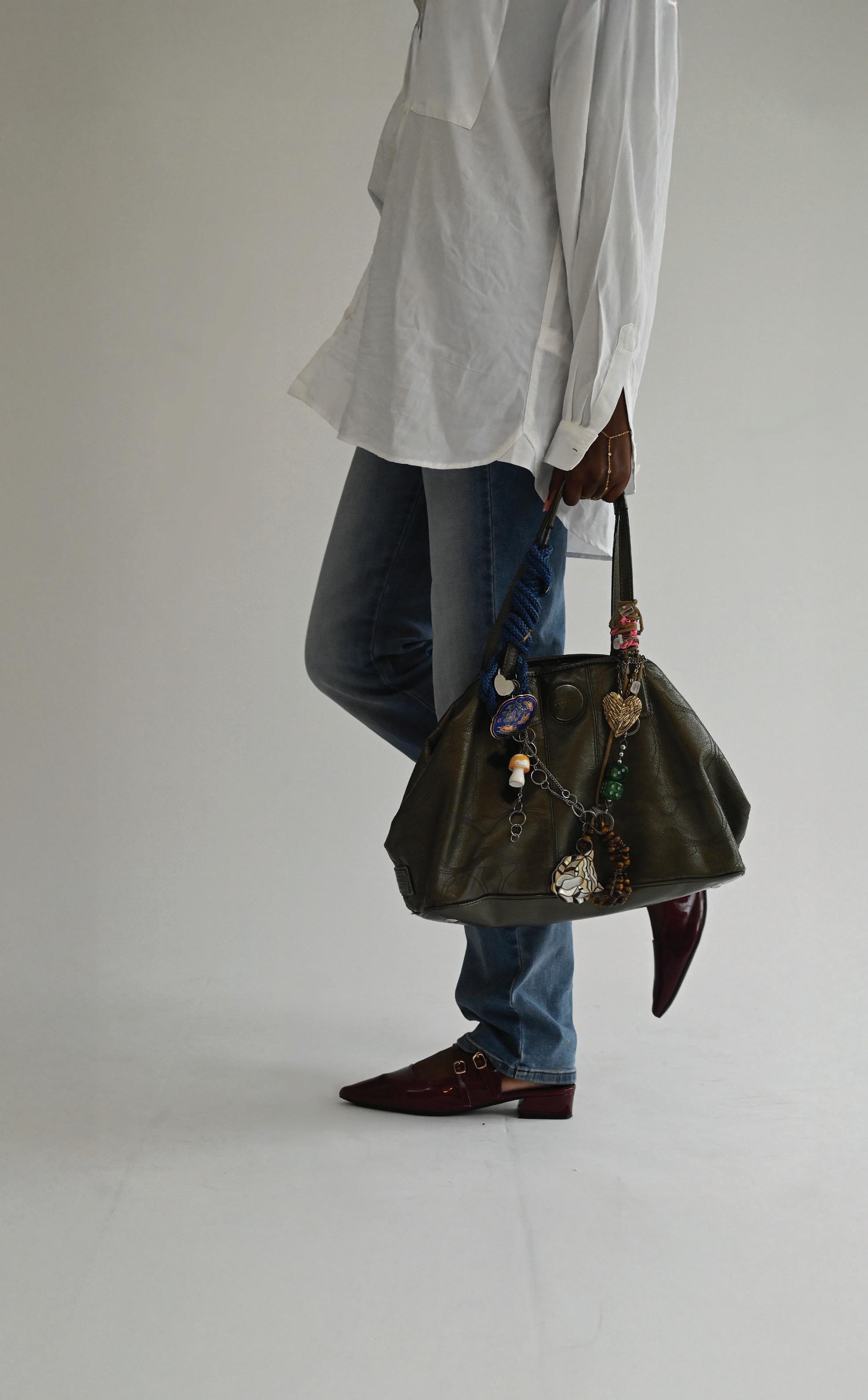
In true Jane Birkin fashion: "I never have more than one bag at a time." The timeless, effortlessly chic Birkin-inspired bag is customizable to your heart’s content with charms, ribbons, and anything that makes it you. The goal? A bag that feels so authentically yours, it becomes an extension of your personality.

Tyler, the Creator, and Harry Styles are somewhere beaming with pride. Think mismatched patterns, grandpa cardigans, chunky loafers, and vintage-inspired everything. It’s all about that quirky, carefree style that somehow feels both nostalgic and fresh at the same time.
E c l e c t i c G r a n d p a

Bye-bye to the chunky dad sneakers straight out of the '80s, and hello to sleek, slim-fitted shoes! Yes, Adidas Sambas ruled the summer of 2024, but it’s time to look ahead to the new sneaker stars: Onitsuka Tigers, Puma Easy Riders, and ASICS SKYHAND OGs.
SLI M SNEAKERS
Motocross

The leather biker jacket ruled the 2010s, but now the whole motocross vibe is racing back! Moto boots have been the star shoe for a while, and now we’re going full throttle with edgy leather and chunky silhouettes.


Fringe
Fringe has made its comeback, and it’s bringing major boho-western vibes! Skip the cowboy look—this season’s fringe is all about effortless flow and earthy textures.

Written by Morgann Rhule
Photography by Maximus Williams
Styling by Jordan Landreneau and India Marshall
Assisted Styling by Sadé Walker and Brennan Hegedus
Hair and Makeup by Juanita Arango
Layout by Sabrina Sylvester
Talent by Sadé Walker and Brennan Hegedus





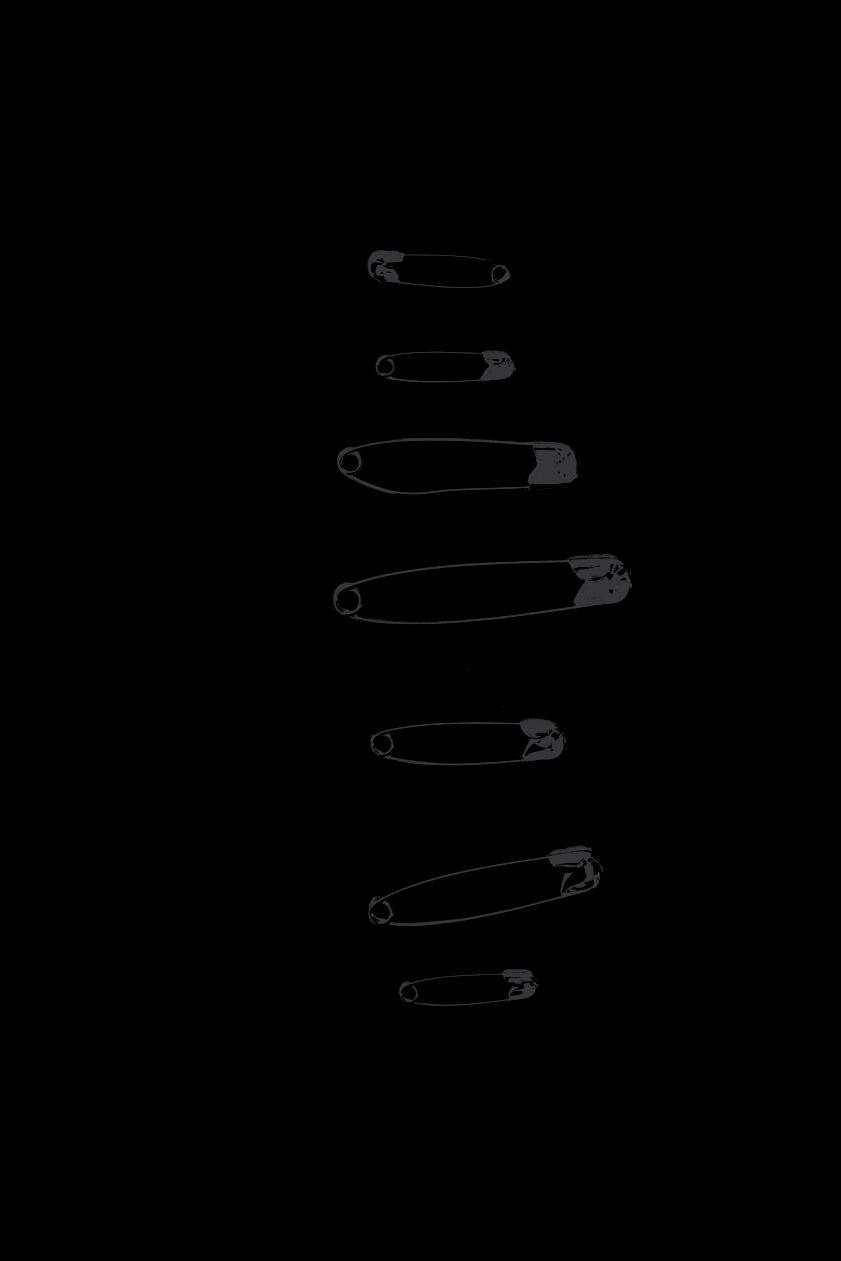
THE DECLINE OF FASHION STANDARDS








The clothes we wear today are not the same as they used to be. In this day and age, fast fashion rules the industry, allowing people to keep up with trends in a more affordable way. Lower prices often lead to lower quality, yet it’s clear that clothing quality has worsened even as prices keep rising. Polyester has become the most used fabric globally, and Shein has become people’s preferred option for cheap and trendy clothing.
Over the years, brands like H&M, Zara, and Forever 21 have been consumer's go-to for finding “dupes” of clothing from more expensive brands. People have trusted these brands to deliver high-quality clothing for a lower price. While customers gravitate towards them, the ongoing decline in quality undermines the expectation.
H&M is an extremely successful and popular brand known for keeping up with current trends. To keep their products up to date with the quick-moving fashion industry, they cannot overspend on production or materials. This means they will choose to spend less money on a greater amount of poor-quality material than invest in a

smaller amount of a more expensive one. Not only does this allow them to avoid going into debt, but it allows their profit to continue increasing because they are putting out what customers want.
One low-quality material commonly used for clothing is polyester. This synthetic fabric is made out of petrochemicals derived from petroleum. H&M is guilty of being a brand that contributes to its reliance on the industry. While polyester is a durable plastic that makes for long-lasting clothing, it is not biodegradable.
Stores like Shein have dominated the conversation for so long that people have forgotten that fast fashion refers to quality, not price. Luxury brands like Gucci and Louis Vuitton have also incorporated polyester and acetate into their clothing and accessories. Acetate is another lower-quality material many brands use because it is not expensive to buy in large amounts.

It is a semi-synthetic fabric made from wood pulp and has a texture similar to silk, so it is a cheaper alternative.
On most websites, a materials list under the product photo tells you what the clothing item is made of. One blouse on the Gucci website had 75% acetate and 25% silk for a mere $1400.
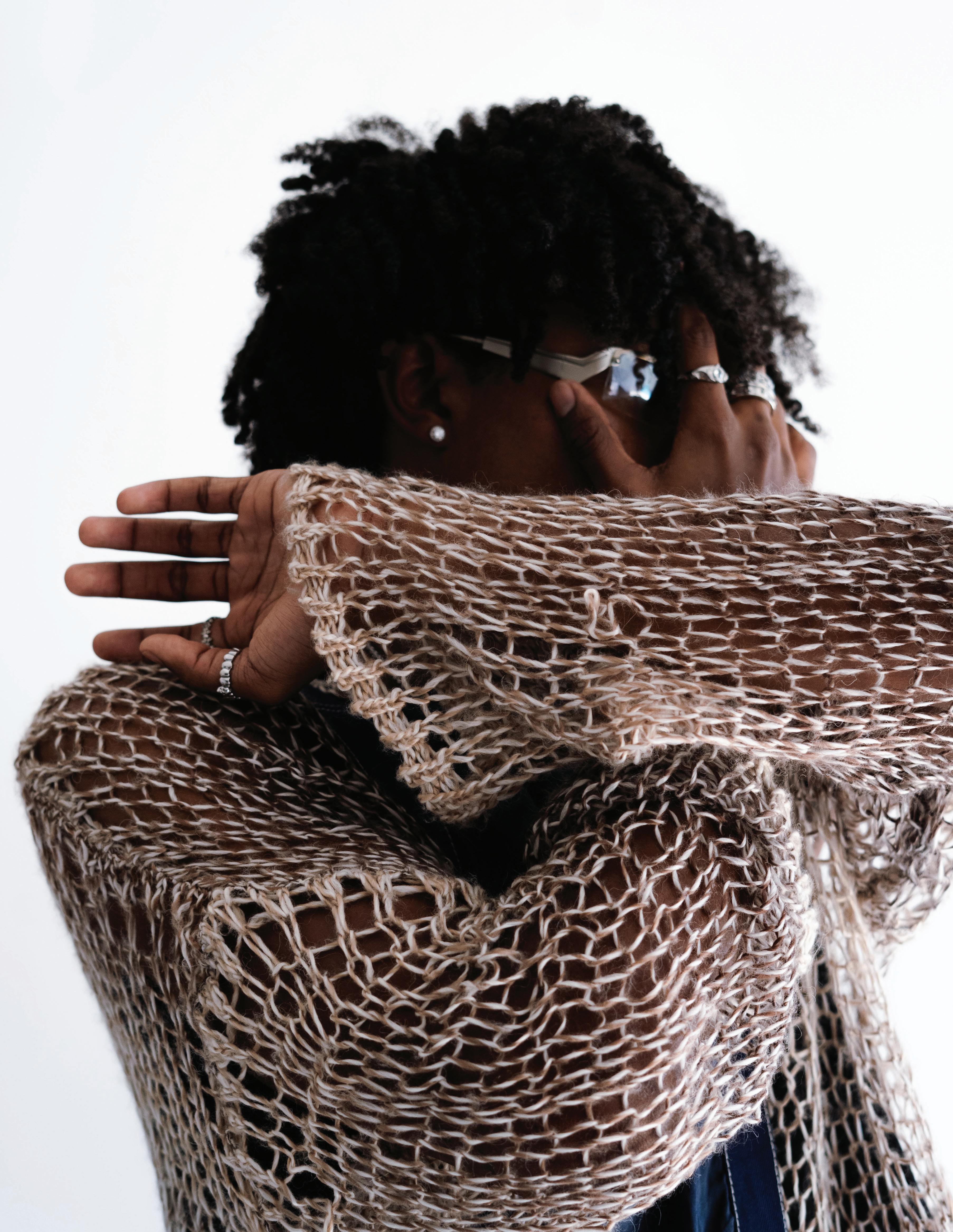




SHOES: RAF SIMONS, PANTS: PAYNESTAR, TOP: MAISON MARGIELA, GLASSES:PRADA
Brands that produce low-quality products often receive the same or increased profits simply because they carry names like Gucci or Kate Spade. But, it is common for people to want to invest in a particular product because it has a name brand rather than buy something well-made from a smaller one.
Clothes aren’t the only products that feature low-quality materials; accessories do as well. Kate Spade and other designer brands that produce purses often use polyester for the lining on the inside of the bag. Although this is less likely to be a problem than with clothing, it just adds to the increase of this fabric and, therefore, fast fashion.
Many brands have begun to use lower-quality materials to reduce their expenses, yet it's unclear why they aren't transparent about their products. Instead, they market themselves as slow fashion, when in reality, they operate under a fast fashion model that prioritizes quick turnover over sustainability. Typically, luxury brands avoid acknowledging their role in the fast fashion industry by limiting the number of products they produce yearly and being vague about their manufacturing processes.
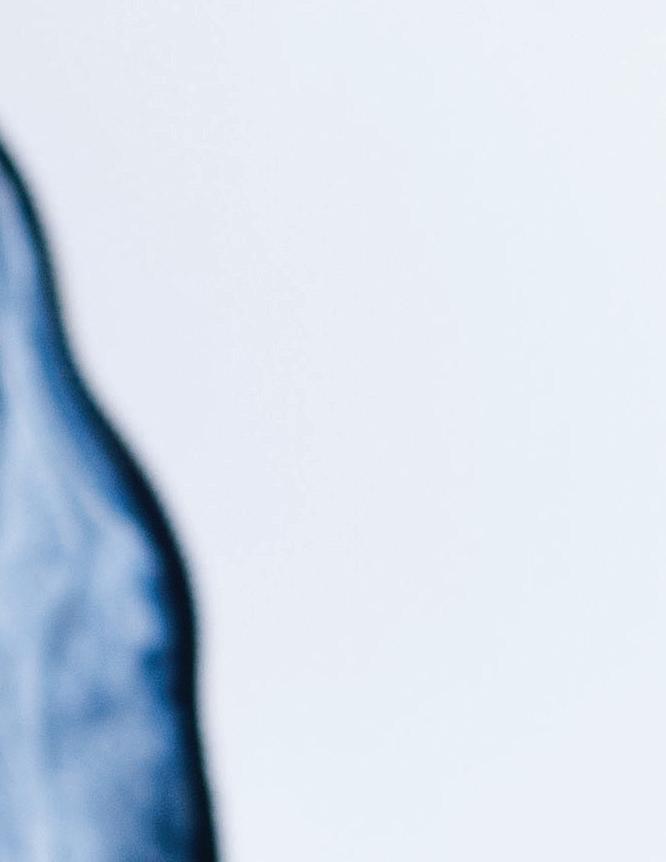


From the perspective of consumers, no one wants to invest a large amount of their money in something intended to be an act of love or celebration, only to find that it didn’t last as long as expected.
There are still many ways to get good-quality clothing that will last. Shopping from local, handmade brands is a great way to ensure that the clothing you buy is worth the price. Additionally, look for items made with fabrics such as cashmere, silk, and cotton that are more durable and long-lasting.




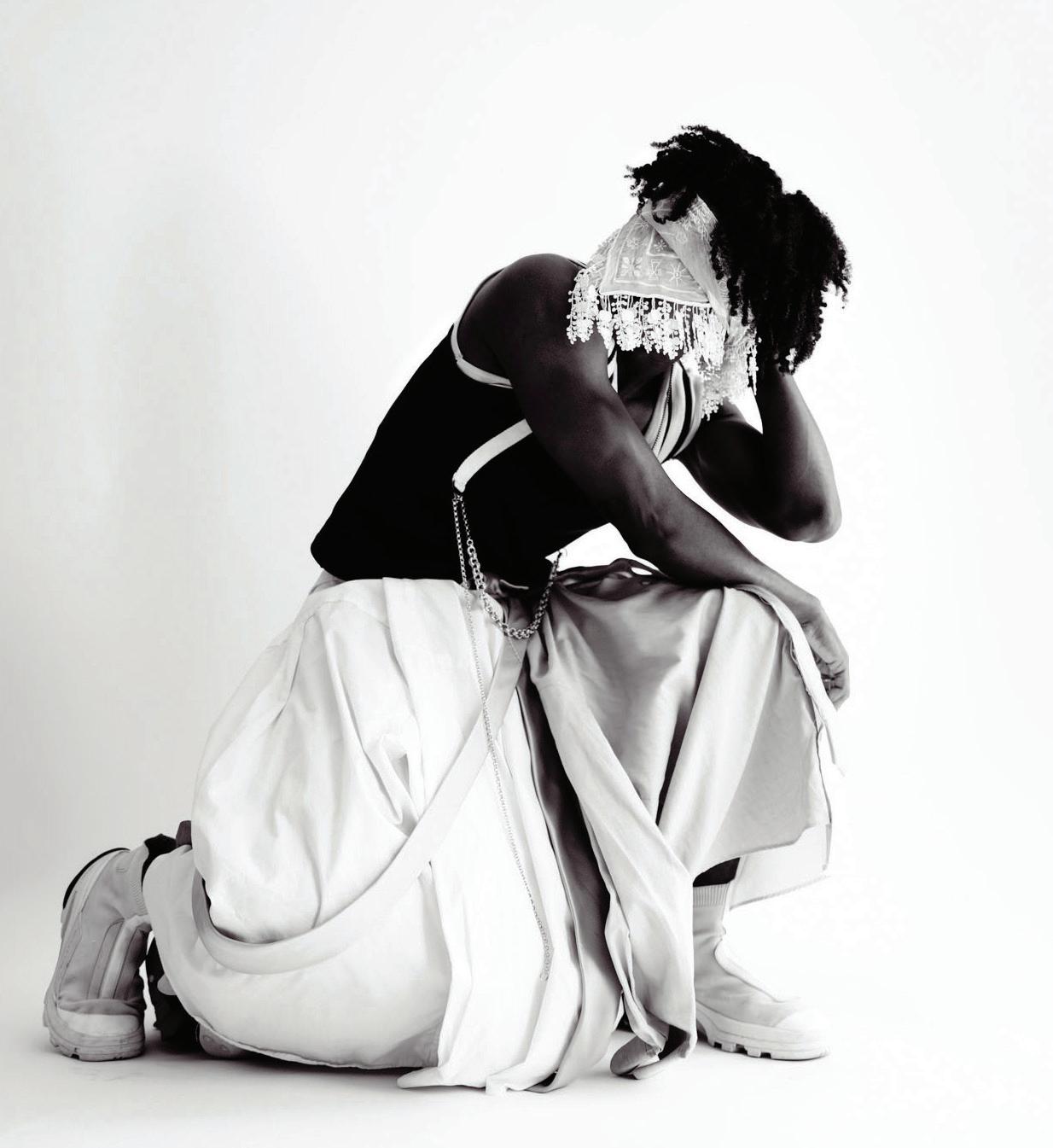
BOOTS:ALYX 1017, SKIRT:HANDMADE, TOP:RAF SIMONS, SCARF:JAKISCHRIST

SKIRT DESIGNED BY PATRICK CALMET AND INDIA MARSHALL












Natural fabrics are much better quality than synthetic ones, but it is easy to mistake a tag that says “natural fabric” for good quality. Organic cotton differs significantly from lower-grade cotton. Organic cotton is much more durable, which is why some clothing items can be more expensive than similar pieces at different stores.
Consignment shops and thrift stores are also great ways to find quality clothing. Not only is it better for the environment to shop second-hand, but you are also more likely to find clothing from years ago when quality was prioritized. If you’re lucky, you can even find a handmade gem here and there.
The fashion industry wants to have its cake and eat it too, striving for profit and sustainability while often compromising quality and transparency. It's important to acknowledge the decline in clothing quality and its shorter lifespan because of that. The fashion industry needs to reflect on what is being put out onto the market and stop causing the question “Where will it go from here?” to enter the minds of their consumers.




WRITTEN BY MADISON DENIZARD PHOTOGRAPHY BY ALICE OLESIYA RUNKEVICH STYLING AND DESIGNING BY PATRICK CALMET AND INDIA MARSHALL
ART AND LAYOUT BY PATRICK CALMET TALENT BY JULIEN AMAYA





nights. However, when they look beyond the bright images, the quiet moments fade away, insecurities surface, and their true selves often feel buried under the weight of seeking likes and validation. This constant quest for approval blurs the line between reality and illusion, creating a gap where genuine connections once thrived, which becomes the art of formulating a false sense of who they are.
It’s all about intentionally or even subconsciously crafting a persona that doesn’t truly reflect who someone is. Creating a curated identity is like painting a self-portrait. Each brush stroke reveals what someone values, like their style, interests, or way of life. It's about picking out the best pictures, posts, and stories that focus on one’s looks or “awesome” moments, all to build a successful online presence.
An influencer who creates content surrounding luxury traveling will show these extravagant locations and expensive meals even though they can’t afford that lifestyle. They do it because they’ve built a platform off a fake persona and must keep an audience engaged with their content.
Every post sets a benchmark, influencing how they view their own achievements, looks, and lifestyles. As curated identities grow, they change how people see themselves and influence what society thinks is beautiful, successful, and authentic. This makes the online world a place where first impressions matter more. Constantly seeing these idealized versions of life can pressure them to change, whether trying out new fashion trends, picking up certain hobbies, or tweaking their appearance to fit a particular beauty ideal. In the quest for acceptance and recognition, they often lose sight of who they are, changing not just how they look but also what they value and enjoy.
People attending events and social gatherings they’re not genuinely interested in, simply to capture the perfect photo for their profiles has become a common
practice. Driven by the desire for likes and engagement, many actively chase fleeting moments of happiness and social approval. However, this pursuit often leaves them feeling empty and disconnected. As they grapple with their true identities, confusion sets in about who they are. This relentless race for validation can spark a crisis of identity, forcing them to navigate the delicate balance between their authentic selves and the curated images they project to fit in and appear “in the loop.” Ultimately, the pressure to conform can lead to a profound sense of isolation as they struggle to find genuine connections in a world dominated by superficial interactions.
The polished photos and highlight reels we post make authenticity harder than ever. This constant chase for approval can lead to anxiety and stress. With social media trends and standards constantly shifting, it becomes challenging to keep up. The fear of judgment or rejection often leads people to hold back, chipping away at self-esteem over time, making folks more susceptible to negative thoughts about their appearance, achievements, and worth. The desire for acceptance can overshadow the value of authentic self-expression and real relationships, and we forget that real happiness comes not from the likes we get but from accepting ourselves, flaws, and all.
In the end, the relentless pursuit of online validation and the pressure to conform to curated ideals can significantly hinder one’s ability to cultivate a genuine identity. As individuals chase likes and engagement, they often lose sight of their authentic selves, becoming entangled in a web of superficial connections. The drive to be everywhere and involved in everything leaves little room for self-reflection, making it increasingly challenging to build a solid identity rooted in personal values and passions rather than societal expectations. Ultimately, true fulfillment comes from embracing one’s flaws and imperfections, nurturing genuine relationships, and prioritizing self-acceptance over the fleeting approval of others. In a world dominated by polished images and highlight reels, it is essential to reconnect with what truly matters, fostering a deeper sense of self that transcends the superficiality of social media.




primary primary primary primary primary





secondary secondary secondary



PhotographybyCaitlynCanoandDeleonCross StylingbyEllaChanandSadeWalker MakeupandHairbyJuanitaArango ArtandLayoutbyAlexaBelcuore TalentbyAngelikaSolopenkov,IndiaMarshall,ArabellaCampbell, ChristianMenke,KeyannaSilpot,TerrelleW.Stephen






Democracy: a government ruled by the people. A sacred aspect of American society.
A privilege. But what is to happen, when the people become divided? When does unity lose its place as a priority?
Written by Morgan Harms Art and Layout
by Sabrina Sylvester
The Beginning of Democracy ’s Demise
As we find ourselves walking a road of societal divide, our nation faces a doomed future. Many have lost touch with an essential goal of our government: meeting the needs of the people, and ensuring the citizens of our country are liberated. Rather than working to accomplish this goal, a common interest has been to revert back to child-like mannerisms. We take sides, point fingers, name-call. There is no attempt to understand the perspectives of others. If it isn’t your beliefs, they must be wrong. We feed into stereotypes and allow them to become our perception of normal.
“A
democracy cannot be pure unless it is based on a social philosophy that acknowledges the dignity and worth of all human personality.”
Martin Luther King Jr., Political Activist and Philosopher
Lies and misinformation are now just as common as fact. Not only are these distorted versions of reality prevalent, we believe them. We have lost all effort to seek the truth, displaying laziness in our lack of self-education. If you saw it online, it must be true, right? This loss of understanding and complete fusion of fact and fake has mangled our perception of realism and authenticity.
"An informed citizenry is the bulwark of a democracy."
Thomas Jefferson, 3rd U.S. President
The party you affiliate with has become a defining aspect of your personality. A decision based on a misconstrued version of what the party system is meant to be. We’ve brought ourselves down to another elementary mindset regarding where our vote lies with a ballot in front of us. We don’t make a decision based on facts and the future of our democracy; we make a simple decision between the color red and the color blue.
“A house divided against itself cannot stand.”
Abraham Lincoln, 16th U.S. President
Democracy is viewed by many as a picture painted in black and white, when in reality, this idea is a colorful mosaic. It’s not intended to be simple; it’s extremely complicated and difficult to navigate. Feeling strongly about a political concept is good, and having someone feel differently about that concept is great. Right and wrong in politics can be fuzzy, which is why discussion and opposition are crucial. No one should be deterred from expressing their opinion out of fear of being labeled fanatical simply because it’s not yours.
“In a democracy, the opposition is not only tolerated as constitutional, but must be regarded as welcome and vital.”
Thomas Jefferson, 3rd U.S. President
The simplicities of the United States Government, concepts we learned before graduating high school, have become completely forgotten. We’ve fallen victim to the illusion that the president-elect is the ruler of all. When in reality, the foundation of our government was built on the complete avoidance of this idea. And we shouldn’t necessarily blame voters for falling into this trap of believing your ideal candidate is swooping in to single-handedly save the day because many of them act as if they can and will.
“A government of laws, and not of men.”
John Adams, 2nd U.S. President
This lack of respect for the principles of our democracy, especially checks and balances, from politicians is simply terrifying. But, this lack of regard is fueled by the varying social changes contributing to our societal divide. We have entered a new era, and for many, change is terrifying. This fear of change leads people to latch on to elements of society that keep them grounded in the way things were before, regardless of how necessary the change is. Technological advances, news of war, violent crimes, corrupt governments, immigration, and climate change can induce in some an anxiety that cultivates a divide between neighbors.
“Change does not roll in on the wheels of inevitability, but comes through continuous struggle.”
Martin Luther King Jr., Political Activist and Philosopher
However, this on-edge mentality is not strictly bred from worldly ongoings. It is propagated by public figures. These public figures are not simply born with the power to influence the public; they are given this power by the people. This power in public figures becomes dangerous through extreme idolization, allowing them to gain cult-like followings. These public figures have an extraordinary influence on their followers, which can cause ignorance in the population. Rather than conducting research on their own and going through the process of forming their own thoughts and opinions, they will imitate the beliefs of their idol and trust every word they say. When we see this idolization in political figures, it becomes dangerous on an entirely new level.
“When a leader is idolized, the individual becomes a mere tool of the state.”
Chris Hedges, American Journalist
Skepticism is not only important, it’s necessary. If we are to believe every word of an individual, follow their every command, and support the entirety of their ideology, we are no longer believers of democracy. We are instigators of autocracy. A concept long forgotten is that even public figures held to the highest regard are only human. They are not an above-all, imperfect god.
“The capacity to combine commitment with skepticism is essential to democracy.”
Mary Catherine Bateson, Writer and Cultural Anthropologist
To be a democracy is to be a government led by the people. In order to maintain this, the people must exercise their right to form their own opinions and elect their choice of leaders by voting. The only threat to democracy is the people themselves. Democracy is weakened when citizens disengage with governance and, therefore, do not feel represented by leaders or their policies. Allowing ourselves to fall victim to the unethical use of technology threatens our society by disseminating fake news and encouraging polarization. We lack representation of youth and women in politics, leading to an imbalance of perspective in leadership and crucial decisions that affect the public as a whole.
“The death of democracy is not likely to be an assassination from ambush. It will be a slow extinction from apathy, indifference, and undernourishment.”
Robert M. Hutchins, Educational Philosopher
DD
So, to move forward and save our privileged democracy, there is one simple answer: be a good citizen. Voting alongside your neighbors ensures that your shared values and issues are heard. The more we vote, the more powerful our voices become. Don’t limit your vote to major elections. Keep yourself informed about local politics, and vote in local elections. Voting is the backbone of our democracy.
"The
most powerful weapon we have is the vote."
Barack Obama, 44th U.S. President
Do your own research, and form your own opinions. Prioritize being knowledgeable, and exercise fact-checking. Educate yourself on policies, politicians, and current national and worldly issues. Understand your government. Learn political terminology, branches of government, and their functions. Know the laws, the constitution, and your rights. Familiarize yourself with political systems, parties, ideologies, and electoral processes.
“Liberty cannot be preserved without a general knowledge among the people, who have a right and a desire to know.”
John
Adams, 2nd
U.S. President
Practice understanding. Make an effort to grasp the perspective of others and appreciate the beauty of our differences. Value your community, and be compassionate towards your neighbors. Don’t lose sight of our common goal, ensuring freedom, equality, and welfare for all.
“Democracy arises out of the notion that those who are equal in any respect are equal in all respects; because men are equally free, they claim to be absolutely equal.”
Aristotle, Ancient Greek Philosopher
We are not to be called the United States of America if we are not united. We are not to continue our legacy as a great country if we are uneducated and unequal. We do not deserve the privilege of our democracy if we are to put our justice, domestic peace, national security, the well-being of our people, and liberty for us and future generations at risk. John Adams once said,
“Democracy never lasts long. It soon wastes, exhausts, and murders itself. There never was a democracy yet that did not commit suicide.”
So, let’s take it upon ourselves to save our democracy and prove this notion wrong. Let us cultivate an everlasting national community striving to come together, move forward in growth, and withstand the odds. In a society as diverse, beautiful, evolutional, and inspiring as ours, We the People, have the power to be better and to revive and continue a legacy of greatness.
From the Gettysburg Address:
"Government of the people, by the people, for the people, shall not perish from the earth."
Abraham Lincoln, 16th U.S. President
iN oS TRaNSLaTioN L T

LosingtheMotherTongue
From the moment we are born, we crave communication. Our screeching cries come as a relief. Parents marvel at nonsense babbling and shed tears over our first words. If there is not a verbal language, people communicate through hand movements and body language.
So, how has something that humans are predisposed to changed so drastically over the years? To the point where there are more than 7,000 languages worldwide.
There is the biblical story of the Tower of Babel (from the Hebrew word bālal, which means to disorder or confuse), where the entire earth spoke the same lan-

guage. When the people migrated, they decided to build a tower to reach the heavens. The Lord discovered these people and their impressive unity. To hinder their potential rapid progress, he changed their languages and scattered them around the world.
It’s nice to think that, at one point, we all shared the same language. Yet many believe a similar time is coming. With globalization only increasing, it seems as though English speakers are as well. However, due to the volume of languages, the day when most of the world’s population speaks English is far away. So, how do we truly connect with each other if the very basis of our mode of communication isn’t the same?
Written by Kim Nguyen
Photography by Maximus Williams
Styling by Jordan Landreneau, India Marshall, and Jordan Campbell Art and Layout by Sabrina Sylvester
I have an experience similar to many children of immigrants: facing a language barrier. Whether it was a lack of time or an emphasis on assimilation, the mother tongue was lost. It’s not a glaring problem when living in a country that speaks the same language as you until interacting with those who speak that lost language.
Besides a spoken sentence, there is the written word. Whether it's a letter or a character, it will yield nothing if you do not know the language. It's a wall of black lines against a white page. Impenetrable and isolating. Like an outfit without the body.
You learn quickly that it’s a currency that you can’t exchange your own for. While every language has origins that overlap with each other, each has intrinsic nuances. They all have specific number systems, possessives, and sentence structures. It’s overwhelming, if not discouraging, to know that learning a new language is an uphill battle.
When I started learning Vietnamese, my mind reeled with the complex honorific system. Honorifics are the linguistic forms used to express respect for a person. In Vietnamese, it is considered rude to regard yourself or another with simply “I” or
“you.” So, you would refer someone by a title dependent on their age, gender, and social relationship. Say you would want to address your uncle. The gender and relationship is already determined, but depending on the age, you would say chu (younger) or bac (older).
Even if you are simply referring to a stranger or a service worker, you must use a specific title. If I wanted to call over a woman of similar age, I would pick either co (younger sister) or chi (older sister). Then things get more convoluted when considering if a family member is from your mother or father’s side.
So, with just this one language spoken by 85 million people having such complex rules, where do we start with the other
7,000?
With all these small differences that a speaker can only understand if they learn the language, how do we approach a globalized world when so many language barriers exist?


Initially, it just seems like a hopeless cause. It’s such a startling and isolating feeling when you have to communicate with someone who does not share your language. Both parties are vulnerable while trying to navigate the invisible barrier between them. Thankfully, technology allows us to translate in seconds, but it still has major flaws. Even high-tech software cannot fully grasp the right words like a native speaker would. Translating is a creative process, not a mechanical one.
The first thing to acknowledge is that language does not equal thought. With the phrase “language barrier” being used frequently, a negative image is conjured immediately. It implies that language

is a thing that cognitively traps us. Yet, when you learn a new word, does that necessarily mean you are also learning a new concept? Obviously not. When the word “demure” seeped into the internet’s vocabulary, it didn’t mean people didn’t understand the idea of acting elegant. It was simply another way of conveying a known definition.
What about the notion of privacy? In Italian, no specific word corresponds to the English word privacy. Yet it would be absurd to make the logical leap that Italian speakers do not understand privacy. They still close the door when they go to the bathroom and do not ask strangers personal questions.
On the flip side, the Italian word scaramanzia does not have an equal word in English. Scaramanzia is the superstition that makes one say that the worst will happen to prevent it. This is not a new phenomenon for English speakers. Even a common phrase among theatre actors is “break a leg.” One says that as an endearment or a wish of good luck before someone goes on stage. Its intention is to rob a distant evil of its power, scaramanzia.
Japanese is another language known for its complex honorific system, which leads to the idea that Japanese people are especially polite. This line of thinking contributes to the establishment of language hierarchies. Thinking that certain languages are better than others because of the way they sound, or their structure can be potentially harmful.
Sign language is another medium of communication. Besides being different for each language, there is also a difference in dialect. Chinese Sign Language has two: one that is southern and influenced by Shanghai and French Sign Language. The other is the Northern, which originated in the Chefoo School of Deaf and was influenced by American Sign Language (ASL).
ASL even has its own dialect, Black American Sign Language (BASL), which was created as a result of racially segregated schools.



By categorizing certain languages as more “romantic” or “intellectual” than others, it undermines their history and significance. Language is the product of pain and love. They have words that have been borrowed or taken by new speakers. It’s the culmination and creation of those who have immigrated or colonized. It’s evidence of history being erased and created.
In Donna Napoli’s book Language Matters, she says: “Language is like a hanger that we put our thoughts on. When the clothing is in a pile on the floor, it might be harder to recognize it for what it truly is. The structure of the hanger clarifies the structure of the clothing, but clarification of essence is distinct from the essence itself.”

Language is a beautiful thing. It gives us community and structure. It gives us a melodic way to express our thoughts. They all have special elements that cannot be replicated, so the solution is to revel in the differences. Instead of feeling lost or assuming something negative is said, when someone is speaking a different language, recognize that it is just a different kind of hanger from your own. When visiting another country, the few words we pluck out of a dictionary to greet people may encounter indifference half the time. But for the other half, you’ll be greeted with a smile or perhaps a look of surprise.

No matter your beliefs, there is something -spe cial about having a unique way to communicate with those close to you. For those you wish to converse with, learning a new language is not a chore but a labor of love. It’s an act of bravery to learn a new language. Acknowledging that you are willing to start from the beginning shows -vul nerability. What is a bigger display of going out of your comfort zone than finding a new way of conveying the very basis of your communication? Learning basic sentence structure and vocabulary is similar to learning your original language as a child. Initially, frustration will build when you can’t remember certain words, or they just don’t sound quite right. But eventually, they will sound -natu ral. You are able to string words or signs together to form sentences. And once again, parents and loved ones will stare in awe of your newfound voice.




THE SUFFERINGS













Leaves are beginning to fall (not in south Florida) and so are you, but not with potential. It’s time we get kinetic. For this scientific energy lesson, I expect you all to be in attendance.
Potential energy web definition: energy that is stored
Kinetic energy web definition: energy in motion
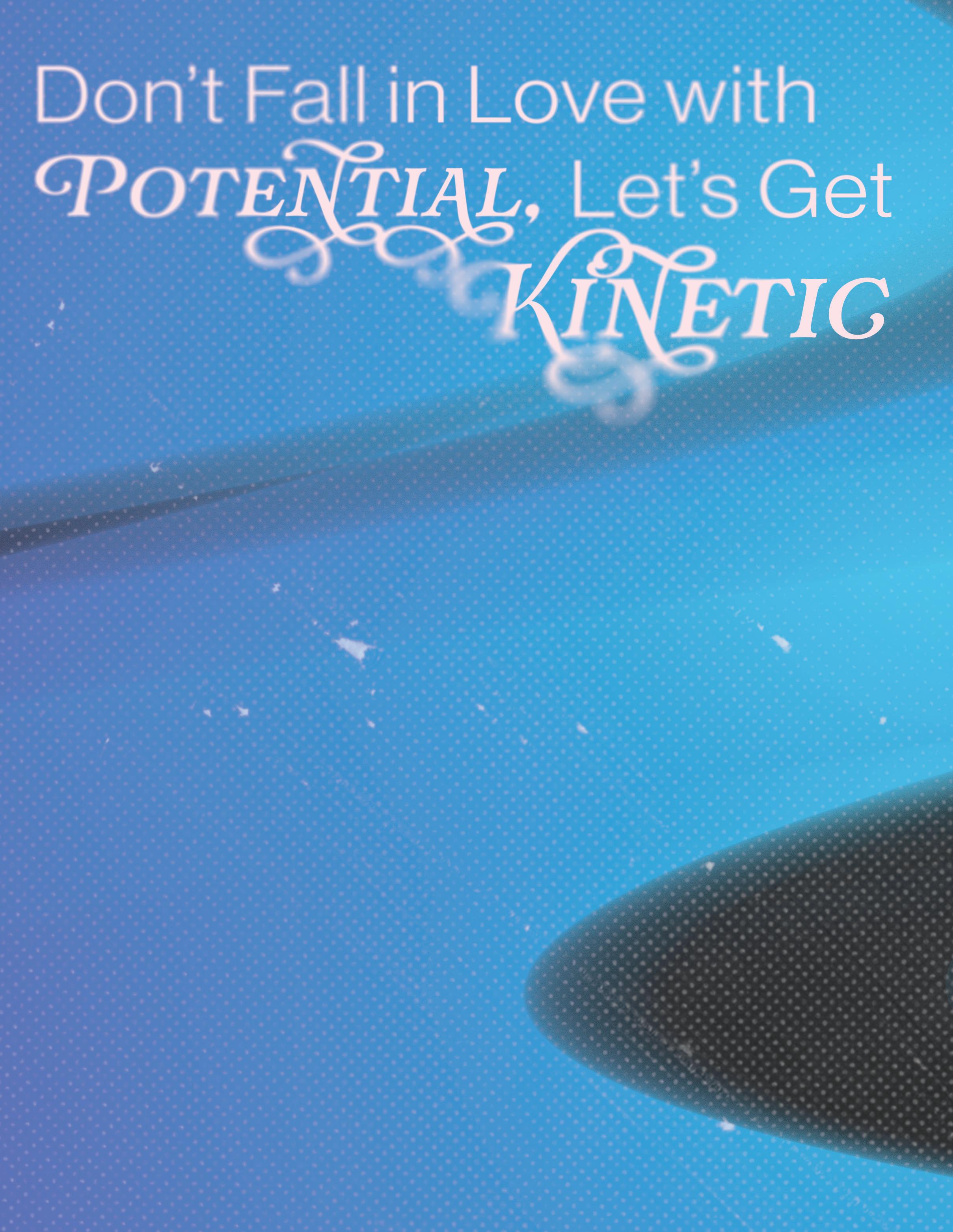
Potential energy Strike definition: What could be, per your illusive imagination
Love can often feel like a euphoric swing set, an adult playground that leaves you feeling like a little kid. Kiddish laughter and crushes that come to fruition are when you tend to be most vulnerable. It’s when you’re at your highest push on the swing– knowing it will come down, you have become frozen in the potential energy leading up to its kinetic downfall. On the climb, you’re the daily recipient of “good morning” texts, slipping “babe” into the conversation and a bring-home buddy from the bar. What more could you want? And why?
What you want and what you deserve should be in line with one another: a real date that did not begin at the bar, love letters sent via pigeon, and remaining calm and gentle in an argument (arguments only become hostile when respect is absent). You deserve someone who wants to take your Mercedes AMG virginity and upgrade you from passenger princess to life behind a luxury wheel.
Above all semantics, you deserve unconditional love, something irrevocable and unmistakable as anything but. If they wanted to, they would, but love isn’t telepathic
Kinetic energy Strike definition: What is, per effort and action
and requires a line of communication. So, the things we crave in love and in life must be announced and claimed proudly to edge them out of potential and into the kinetic.
Psychologically, we crave these things almost innately, as if we don’t know better than to desire otherwise. That being said, the potential someone presents can start to look a lot like love when, in reality, it is just you filling in the blanks of what could be. Relationships aren’t meant to be a mad lib.
You deserve a love that expands beyond nuances. Why we want to be loved, why we need to be loved rather, is an age-old question that psychologists have answered: it is a fundamental need. No different than food or water, to be loved is to live.
The predominant issue with falling in love with potential is that you conjure an idyllic person in your head based on how they make you feel using their resources: the bare minimum. When I say, “Let’s get kinetic,” I mean, let’s start falling in love with affirmative actions that are supported by words and kind gestures. More importantly, I mean, let’s get scientific.
In relationships, words are the potential, and actions are the kinetic. The energy it takes to make promises is half of what it takes to follow through with them, and even less is what it takes to break them. That’s why it is always easier said than done. To fall in love with what you hear is to ruminate on the potential of carefully curated wording for the most egregious form of manipulation. To say “I love you” is one thing, but to mean it is something else entirely. It is something of much greater significance and intricacy.
Living in a state of potential is to be hung between what used to be and what no longer is, or perhaps what never was. It places shackles around your mind, keeping you complacent in an unrealistic state. Potential energy, scientifically speaking, is quite literally energy stored. Everyone is capable of loving. Everyone is capable of making an effort, and these intangible forces are the things in life that are simpler than the equation behind them. These forces are what make us human, threaded into our genetic coding, and will unwind into the kinetic when we decide to exercise our humanity.
To simmer in someone’s potential, or even in your own, is to live in a storage unit despite the beautiful home being built and curated to hold you for years to come. To live in potential and stored energy is to drive all night in search of the morning but never to see the sun.
Living kinetically does not share its home address with potential. Kinetic energy is a result of motion. You cannot achieve kinetic living without moving from stagnancy. By moving and rearranging your priorities to serve you and your goals, you will find that the only energy being stored is the memory of living in potential. You will find yourself the owner of a beautiful home that represents your mind.
Time is always moving; it is always living kinetically. The sooner you move with it, the sooner you will live kinetically. Living in potential is easy to fall victim to, but it is not a life sentence.
Here lies the dangers of investing in all of this stored energy that you may believe to be the hidden meaning of what is actually happening. In his book You Are The Placebo, Dr. Joe Dispenza heeds, “If you repeat or maintain certain attitudes long enough and you string those together, that’s how you create a belief.”
Unlike an attitude, a belief can take years to correct. By continuing to perceive past situations the same way, your mind finds residence in a time where your body no longer resides- causing you to live passively. It is a hindrance to all that should be kinetic. In layman’s terms, you nev-
er move on by revisiting memories that no longer serve you, memories that allude to potential, and nothing more.
In terms of potential and loving your perception of something, obsessing over the bits and pieces of love you are given, you become addicted–an addict of your own design. But there is no brick-and-mortar rehab for this kind of high. Oxytocin, the love hormone, is produced in higher frequencies upon human touch and interaction. Men and women produce this hormone at different points, and so comes the catch: men produce dopamine (pleasure) during sex, and women produce oxytocin (love).
Essentially, sex is a dopamine hit for men, similar to scrolling through your phone. You’re not bonding with the reel on your screen, but it still offers that slight satisfaction, that ounce of pleasure. Once you’ve got the hit, the video is easily swiped away to be forgotten along with every other.
This isn’t about a video on your screen.
Instead, men release oxytocin during times of intimacy that have nothing to do with sex. Through conversation or true bonding that would signal respect to the woman in the relationship, men fall in love.
Women produce this hormone in the exact opposite fashion. Through intimate and sexual moments, they fall in love and feel as though they have bonded with a man who has, in fact, just had his daily dose of dope.
To have sex is not to bond, and to bond is not to have sex– If there is no foundation of respect or even friendship, the relationship will see an untimely ending and inevitable heartbreak.
By understanding the biological and hormonal differences between men and women is to understand potential vs kinetic energy in your life. It is possible to find the balance between the two seemingly contradictory love languages. If you’re a woman having bonded with a man in the sheets, take his words with a grain of salt. Maybe a tablespoon. When sex is used to bond, it is weak enough to break. When you’ve bonded and then taken the next few steps, it is a tie made of iron and euphoria alike.
When searching for what is to be considered Strike kinetic, it will be found in the thoughtfulness of little things, an intangible and unspoken trust, an understanding that is felt before it is seen.
Life is little things in great quantity. That is a life in motion, that is Strike kinetic.

Written by Rosemary Aziz
Art and Layout by Adriana Farfan
Be kind, be smart, but remember: this is everyone’s first time in this life, so give grace. It’s your first time in this life, too. So, give grace.

Written by Haley Dockendorff
Photography by Caitlyn Cano
Art and Layout Adriana Farfan

Necklace by Leo Fasseas

hy is it that in 2024, the younger look older and the older stay the same age? This isn’t some Twilight Zone phenonmenon. No one wants to embrace their age. 20-year-olds are getting “preventative botox,” and middle-aged women everywhere are seriously considering a facelift or taking some other drastic anti-aging measure.
There were 1,575,244 cosmetic surgeries performed in the United States alone in 2023, according to the American Society of Plastic Surgeons, or ASPS (this number only accounts. for surgeons who are a member of the ASPS).
The top five surgeries included liposuction, breast augmentation, tummy tuck, breast lift, and eyelid surgery.
Each of these surgeries comes with its own risks and complications, like those that are associated with the ever-popular breast implant. Illnesses like breast implant-associated anaplastic large cell lymphoma (BIA-ALCL) and breast implant-associated squamous cell carcinoma (BIA-SCC), referred to as breast implant illness (BII) are “drastically” increasing, according to the National Institutes of Health (NIH). As of June 2023, there have been 1,264 cases of BIA-ALCL reported globally, 63 of them resulting in death. Other complications like capsule contracture and implant rupture can occur. Breast implants are not designed to be permanent and require replacement after 10 to 15 years.
As for “minimally invasive” procedures, 9,480,949 Neuromodulator injections (like Botox) were administered, a 9% increase from 2022. 5,294,603 procedures for hyaluronic acid fillers were performed, an 8% increase from 2022.
As more and more women become willing to alter their appearances medically, it calls to question when aging became something to hide rather than something to celebrate. Anti-aging serums, wrinkle creams, and toners have been around for years, but the increase in medical procedures to change how people look and attempt to stop time is a growing concern.
Botox is a brand-name drug of a botulinum toxin. According to the Mayo Clinic, it quite literally uses toxins to prevent muscles from moving for a limited period of time. When nearly nine and a half million procedures of this kind are performed in a year, it’s natural to wonder why so many are willing to use actual toxins to change their appearances.
Many top celebrities and influencers have had cosmetic procedures done, whether minimally invasive or fullfledged surgery. Addiction to plastic surgery is certainly a pressing issue; take a look at the TV show Botched or celebrities like Kylie Jenner, known for her thick, plump lips thanks to repeated injections. Dontalla Versache, Cher, and Dolly Parton – all amazing women figures, yet all unnatural.
What image is that imprinting in the heads of everyone around them about how they look when they age? There are many celebrities out there who do admit to their procedures and the work they’ve done. Still, many do not, creating a false representation of current beauty standards and growing older.


Watching TV, scrolling through social media, or reading a magazine, you see women with thick hair to their waistline, full plump lips, glass skin without wrinkles, and prominent cheekbones. If you look around in real life, at women like your mother, sister, and friends, you see what natural beauty looks like. You see their freckles from days in the sun, the wrinkles around their eyes from years of laughter, the uneven waves and curls in their hair. It is these unique and perfectly imperfect qualities about them that make them who they are.
There’s no doubt that getting older is haunting. Every year, we either cry on our birthday or flip through old pictures just for nostalgia and say, “Wow, I can’t believe how old we are,” with the weight of the future weighing in our voices.
But even being able to look back is a blessing. As scary as aging and growing older can be, each new day is a chance to see this world through this vessel of a human body. Skin wrinkles, bones go frail, and hair falls out. At the end of it all, no matter how many procedures you get done or how many wrinkle creams you use, it will happen. Why try to fight the natural process of aging and growing old?


Button Down by Perlavera

Styling by Ella Chan and Ally Voshelle Hair and Makeup by Juanita Arango
Talent by Maureen O’Shea


The beauty standard that is held for all women to look youthful and perfect is extremely damaging and adds to the increasing demand for cosmetic procedures. If society didn’t convince so many women that wrinkles made them ugly, then perhaps they would not feel the need to repeatedly get Botox injections or go under the knife for cosmetic surgery.
Youthful beauty should still be admired and celebrated, as should beauty at all stages of life. Grey hair and sunken cheeks do not make you any less beautiful, as true beauty comes from within. Learning to accept that humans do age can help us transition healthily into our latter stages of life rather than try to alter our bodies to stop nature’s progress artificially.
As we age, we undergo many changes; our appetites, beliefs, and bodies change together. Learning how to age gracefully and healthily is the one true thing we can do to help our bodies adjust to the change, and that might mean reconstructing our routines as well.
Taking measures to eat healthy, exercise daily, and take care of your physical and mental health is the best thing you can do for yourself. Knowing how to listen to our bodies and give them what they need at each stage in life is essential to age with grace. Rather than trying to hide your age, along with your wisdom, stories, and experience, in unnatural ways, it is more beneficial to aid your body with aging. It is all about being confident in your own skin. For some, that means cosmetic surgery. The beauty of aging is you have the freedom to do as you wish. But in order to feel confident on the outside, you must be able to feel confident on the inside. Otherwise, it will never be enough. Maybe if we just look a little deeper and learn to be confident in the skin we’re born with, cosmetic surgery wouldn’t be so normalized. The cycle of increasing younger girls (and boys) striving to look “perfect” all the time might just end.


Strike out,
Ava Davison






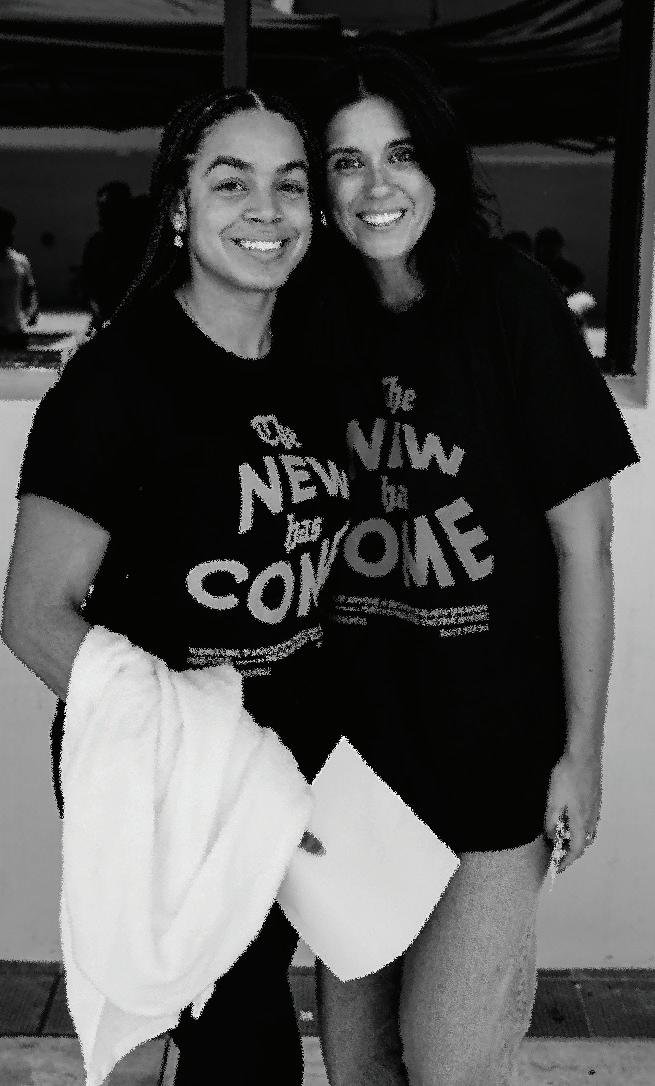








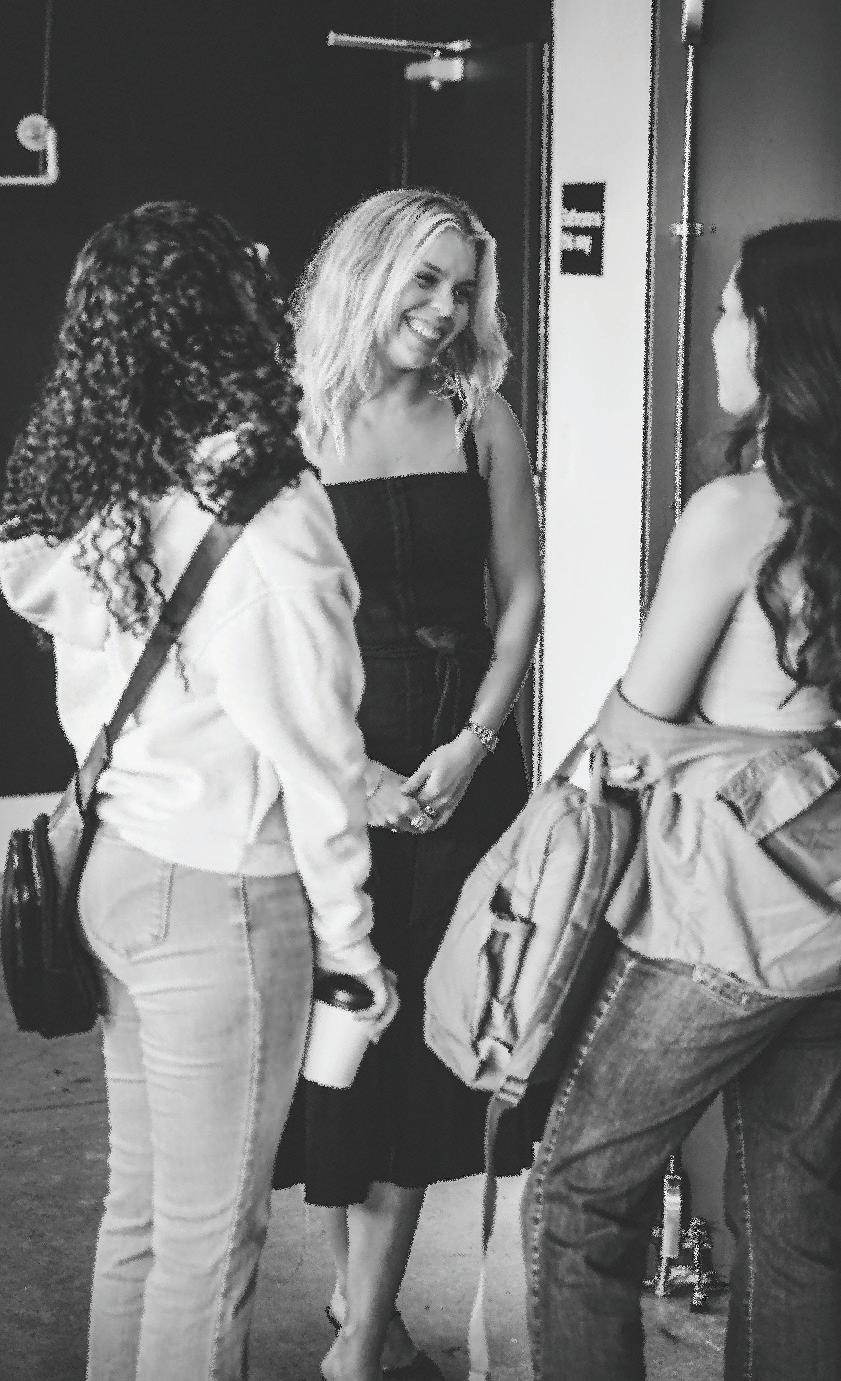





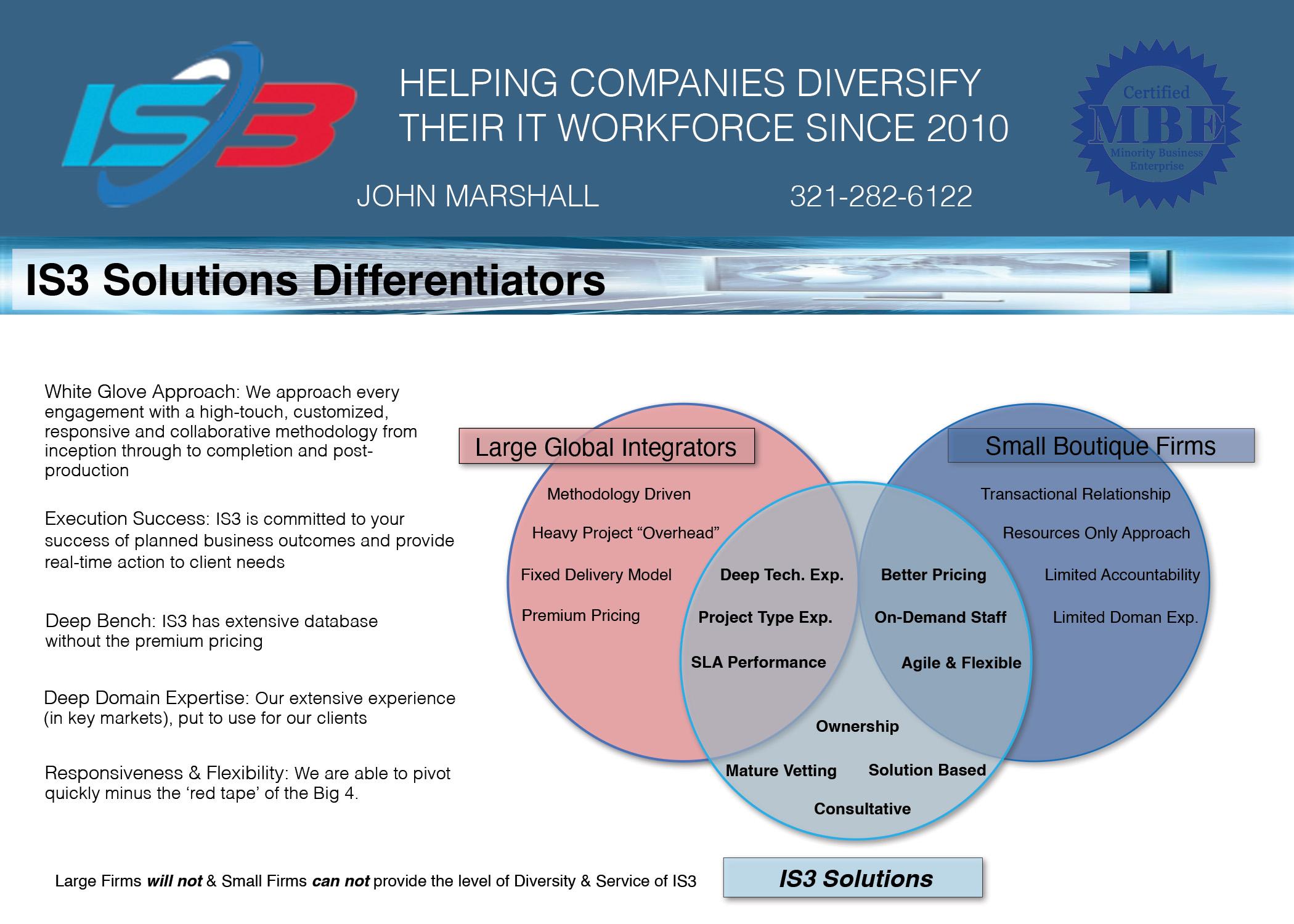





WEDDING VENUE

LOXAHATCHEE, FL
(561) 250 - 7347


